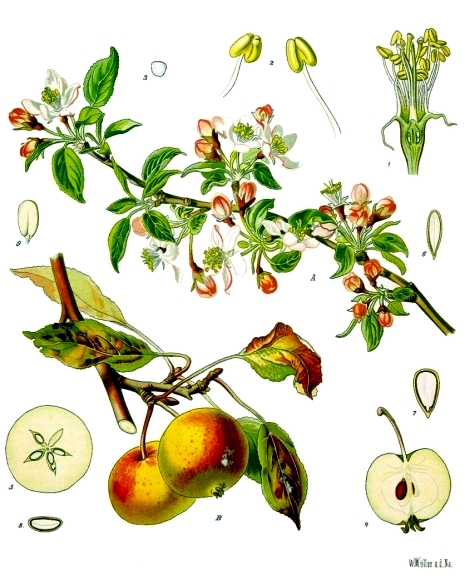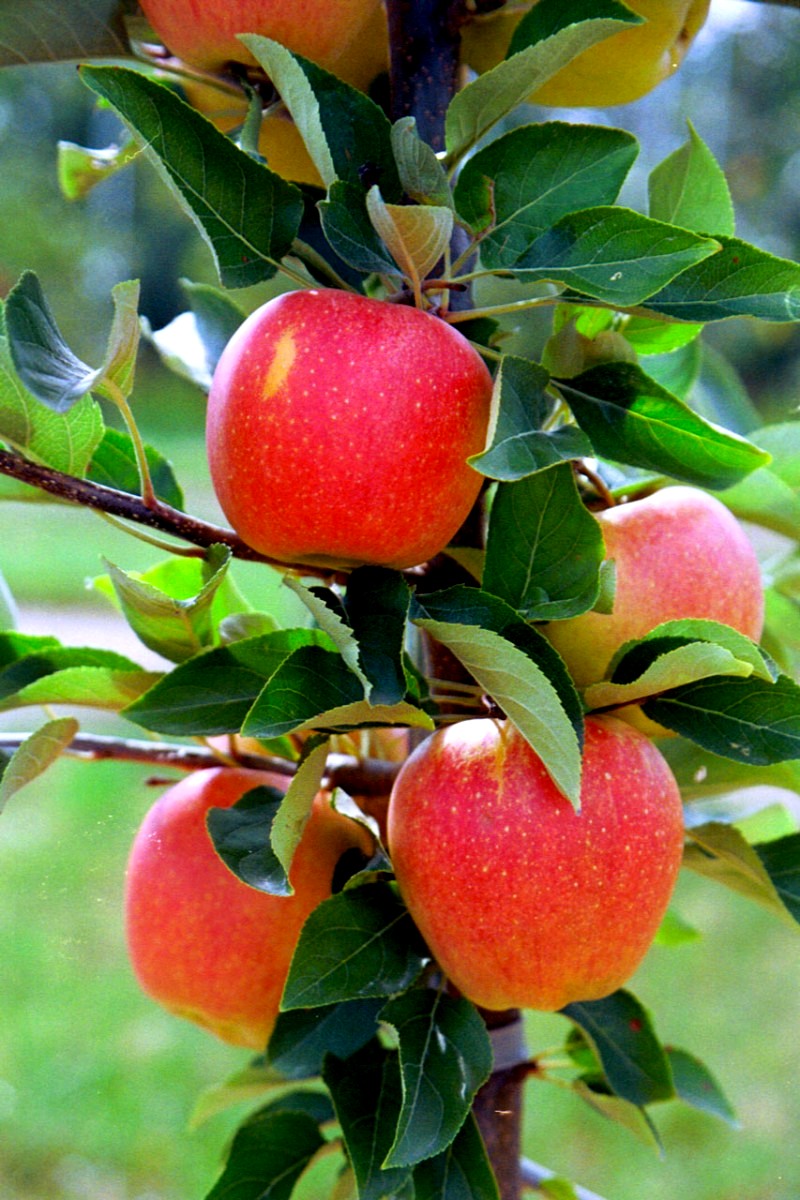An Apple A Day....
New apple varieties (credit: Penn State University)
Honey Crisp, Cosmic Crisp, Fuji, Jonagold, and Snapdragon, are just a few of the apples offered in supermarket aisles and farmer's market stalls. These are just a few among many more. The list of apples now exceeds 7500 varieties and grows with each new release.
Apples originated in the mountains of Central Asia from trees in the rose family (Rosaceae). Wild apples are still found growing there with some cultivars grown in Asia and Europe for thousands of years. Apples were brought to North America by the European colonists and were a favored fruit of George Washington and Thomas Jefferson. Remember the old adage that "an apple a day keeps the doctor away". Whether fact or fiction, the fruit maintains health, culinary, and mythical value in many cultures to this day. A fact sheet on apples from the University of Illinois provides more history and cultural details than you could imagine.


Apples, Malus domestica (credit Wiki-commons) New Apple (credit: Cornell Orchards)
New apples are constantly being developed by the patient talents of plant breeders who utilize genetics from wild selections, heirloom cultivars, and existing commercial types. Apple breeding in the USA takes place at USDA field stations, universities like Cornell, Penn State, Washington State, and by private growers. The Seed Savers Exchange in Iowa created a reference archive on heirloom varieties they have grown. After years of horticultural and consumer testing, stems of a new apple are cut and grafted onto sturdy rootstocks and then released to domestic growers in the multi-billion dollar apple industry. A video explains the grafting process.
Apples are always 'doctor approved' and there is one to satisfy every taste. WHB